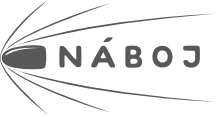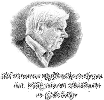1. Participation
Náboj is a team competition for high school students. Teams consist of four or five members. The members of any single team come from the same school. There are two competition categories: Juniors and Seniors. The Junior category members should not be students of the graduation class and the class preceding the graduation class (in England the graduation class is Year 13 or equivalent). The Senior category teams may consist of high school students of any age.
2. Registration
Schools can enrol for participation on the competition website until the enrolment closing date or reaching the full capacity, whichever comes first. All necessary information on the dates, numbers of registered teams and overall competitor capacity is available on the respective website. Upon enrolment, the team chooses the competition site. Competing abroad is not allowed. The enrolment takes place in two rounds: During the first round, each school may enrol any number of teams, but only the first team in each category is accepted into the competition (unless full capacity has been reached), all further teams are put on the waiting list. During the second round, which starts two weeks before the competition, also the second and the third enrolled teams for each school in each category are accepted (unless full capacity has been reached). The enrolment ends one week before the competition. If, at that time, full capacity has still not been reached and the waiting list for given competition site is not empty, all remaining teams are accepted so that the fourth enrolled team for each school is accepted, then the fifth one, the sixth one etc., until full capacity is reached or waiting list is empty. Exception in every country and category is granted to the schools which reached the first three places in the national rankings in the previous year of Náboj: Such schools have also their second enrolled team (in the respective category) accepted in the first round of enrolment.
3. The Wild Card
Each competition place may grant a so-called Wild Card. A school obtaining the Wild Card has also their second enrolled team (in one category) accepted into the competition in the first round of enrolment. The list of schools obtaining the Wild Card for the current year will be published on the competition website before the registration opens.
4. The Competition Start
The Contestants are required to arrive at the competition location in time and to respect the instructions of the organizers. Before the start of the competition every team receives a sealed envelope containing the first six problem statements. The envelope shall be opened only on permission of the organizers; this action starts the competition.
5. Solving the Problems
The Contestants work on any of the six problems they have; the result is usually a single number. As soon as the team concludes that the result is correct, one team member goes to the control point to present a result written on the paper containing the given problem. At the control point, the result is checked and if correct, it is marked by Corrector. The number of solution presentations is not limited; however, after the third unsuccessful attempt the Corrector may require the Contestant to present a full solution in addition to the numerical result.
6. Correctors and Problem Exchangers
There are several Correctors at the control point and each Corrector corrects specific problems only; details will be explained on site upon competition start. If there are several contestants arriving at a single Corrector at the same time, they are accepted in the order of arrival. The paper with the correct answer marked by the Corrector is handed in at the table of the Problem Exchanger. Only the marked problems submitted to the Problem Exchanger are considered as solved. Upon submitting, the team receives a new problem. This is going repeatedly on until either the time limit expires or all available problems are solved. The number of problems will be stated before the competition starts.
7. The End of the Competition
The competition lasts two hours. Upon expiration of the time limit, it is further not possible to queue at the control point. The Contestants already present in the queue can present their solutions for correction. The problems accepted are marked as submitted at the expiration time.
8. The Winner
In every category wins the local team that solved the highest number of problems. Should several teams solve the same number of problems, the winner is determined on the basis of the highest ordinal number of problems solved. If two or more teams have the number equal, the second highest ordinal number of the problems solved determines the winner etc. In case of teams having the same set of problems solved, the winning order is determined depending on the time of submitting the solutions. If this time is equal, the order is determined depending on the time of submitting the last but one problem etc. The same method is applied to determine the order of the rest of the teams. The same principles are used when determining the national and international results.
9. Permitted Tools
Ordinary writing instruments and drawing utensils are permitted. Usage of any kind of electronic devices (calculators, notebooks etc.), long distance communication means (mobile phone, internet etc.) as well as any literature or teams' own preparatory notes are forbidden. The cooperation is allowed only between members of any single team.
10. Statute of the Rules
These rules are obligatory for all participating teams regardless of the competition location. By its registration the team confirms that they have read and understood the rules, and that they will comply with them during competition. Failure to comply with the rules may result in disqualifying the team.
























